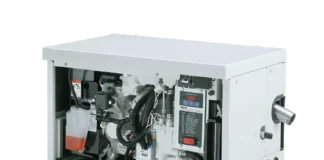Robots now easily perform menial tasks, leading to more efficient manufacturing, safer operations, better quality control, and greater precision. Robots are already used to perform simple repetitive tasks.
As the technology behind robotics continues to improve, more complex applications will emerge. Examples of applications include industrial robots in manufacturing and assembly, outer space, surgical robots in hospitals, and service robots.
What is a robot arm?
A robot arm is a mechanized, multi-jointed arm programmed or controlled to repeatedly perform a task or series of tasks. A robot arm is a device that mimics human movement and performs tasks that are dangerous or repetitive for humans.
Robot arms are the newest technology in the field of robotics. They can perform a wide variety of tasks, from basic housework to complex surgery. They are applicable indoors and outdoors, and they can be outfitted with various tools depending on the task at hand.
As a business owner, investing in a robot arm can be a long-term benefit for your business. Here are some of the benefits you can expect if you decide to invest in a robot arm today.
Benefits of an Industrial Robot arm
The benefits of using industrial robots arms in the production process include higher productivity, lower costs, and more accurate products.
Factories use robotic arms that are programmed to do what humans do. These machines are becoming smaller in size, lighter in weight, and cheaper. The structure has brought about a new wave of robots that are easily programmed to work in assembly lines, making the production of goods much faster and more efficient.
People who work in a factory through a typical day may be required to assemble various parts to create a product. During the assembly process, they must use their hands and fingers to make everything fit perfectly. This task is called precision work, which means that everything must fit together equally well. There can be no errors, or the product will not work. This process also takes up a lot of time, which makes it expensive. It may be preferable to use robotic arms to achieve precision and faster production.
Without getting tired, a robot can perform repetitive tasks like welding metal or putting small parts into an assembly line. Robots can work continuously for many hours without stopping to eat or sleep, which makes them very efficient. They are also not affected by bad weather or material shortages that may occur during the production process.
Robots arms are safer to use than people when working in hazardous environments where they might be exposed to toxic chemicals. In other places with a lot of heat, the robot’s arms do not sweat and will not get burnt. They also have eyes that enable them to see all parts accurately, while humans tend to lose accuracy when the work requires them to look away from their hands for a long time. Robots are easily programmed so that they can perform complex tasks within a short time.
A robot arm can work with people or other robots in a factory to produce goods more efficiently than when it is done by humans alone. They are cheaper and safer than using people for this work, and they also require less expensive tools. The manufacture of products has become much easier and faster because of robots arms in factories.
People around the world have benefited from using robot arms in a production line. It is prudent for more manufacturers to use these machines because it makes production faster and less costly. With robotic arms doing most of the work, humans can focus on other activities that require creativity and intelligence, like design and marketing.
Types of robot arms
There are many different types of robot arms, and here are the most common ones:
- Scara robot: it consists of one or more joints. The number of axes of rotation indicates how many degrees of freedom the arm has. But the number is not what makes a difference between types of arms. Each degree of freedom can be divided into a rotation around a particular axis. For example, if we have an arm with three joints, one can rotate around the X-axis, another around Y-axes, and the third around the Z-axis. That makes 9 degrees of freedom in total.
- Cartesian robot: it consists of several, three jointed robot arms attached in a straight line. This design sacrifices freedom of movement for absolute position accuracy and speed. In most cases, the Cartesian arm is the best solution when designing a production system. It makes possible an assembly line that can move products around with very high precision while keeping them at a constant distance from the worker on the line.
- Gantry robot: it consists of multiple jointed arms that are attached to a rigid frame (gantry) which is fixed at its ends. The advantage of the gantry arm is that it doesn’t collide with a conveyor belt or any other hardware placed in the factory, making it easy to work around even if the robot is doing its job at full speed.
- Scissor robot: consists of two or more arms attached with hinges, giving them a scissors-like movement. It can be very fast but has a limited workspace, unlike the gantry arm, with no obstacles between points A and B.
Final Submission
Robot arms are the future of manufacturing. They’re used in manufacturing for a wide variety of tasks, from welding to assembly. They’re also being used to replace manual labor in jobs like security, firefighting, and sanitation. Many humans are concerned about being replaced by robots and worry that their jobs will be at risk.
Production of goods such as cars, TVs, and clothes are now faster and less expensive thanks to a robot arm. Robotics are safe to work with and can be programmed within a short time for more complex tasks. Finally, robotic arms make manufacturing easier and faster than what human workers alone can achieve.















